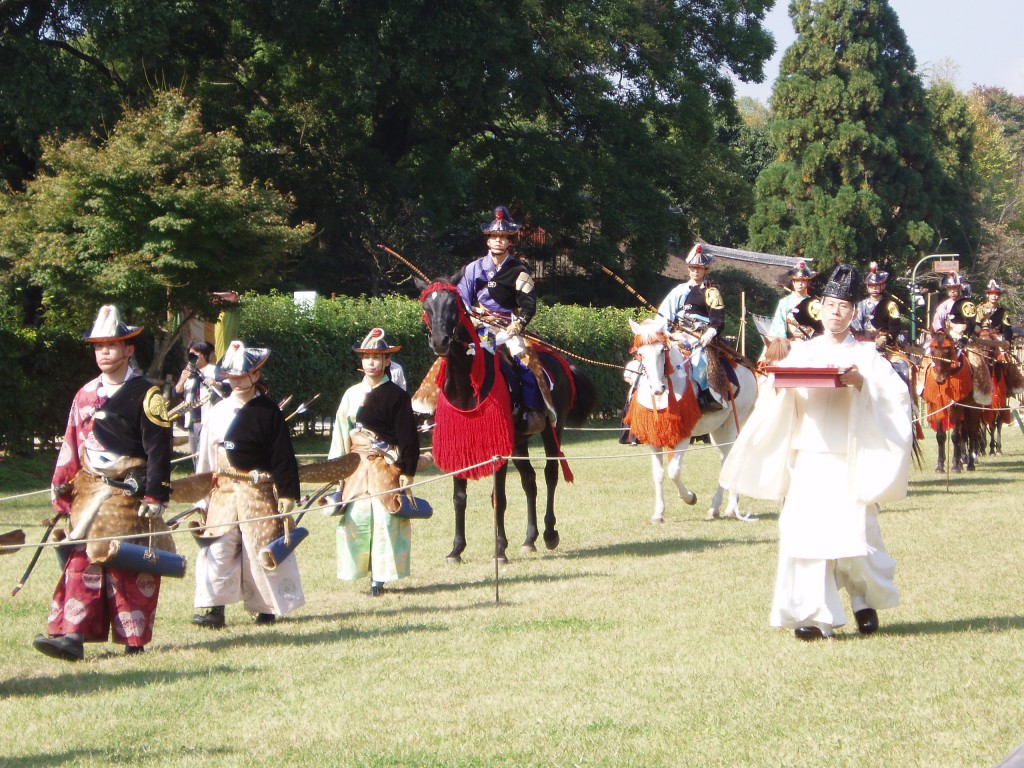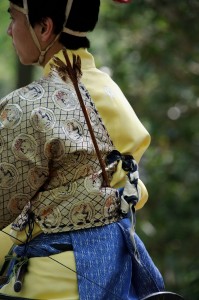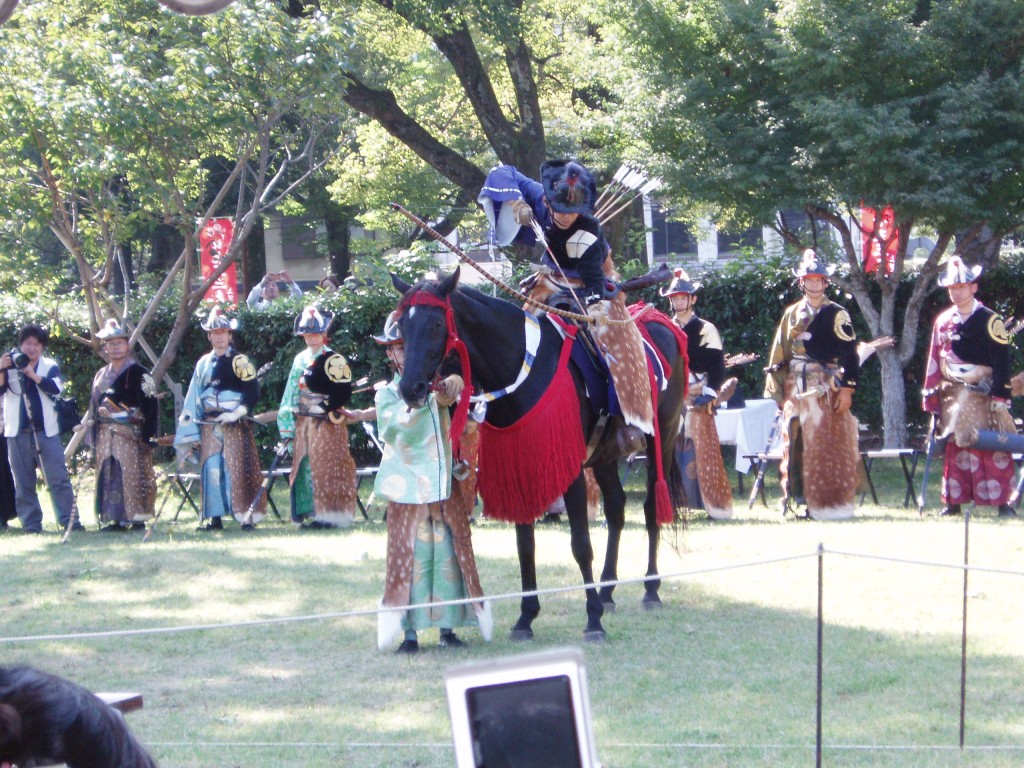
Medieval horsemen parading at Kyoto's Kamigamo Jinja (autumn event). Tomorrow, May 1, there will be a ritual purification for a horse-racing event on May 5th.
The time for horse-riding events is coming up in Kyoto, with festivals at Shimogamo Shrine on May 3 and Kamigamo on May 5. The famed Yabusame horse archery (May 3) is just one of several horse-related events that take place in the city during the year. What’s the fascination?
The history group I belong to recently read an illuminating piece on medieval fighting, which illustrated just how important those horse skills once were. Most people might assume that swords played a dominant part in Japanese battles of the past, but this was not the case at all. Rather it was bows and pikes. Here are a couple of key passages from the book –
 Thomas Conlan ‘Medieval Warfare’ in Japan Emerging, p. 245.
Thomas Conlan ‘Medieval Warfare’ in Japan Emerging, p. 245.
From the eleventh trough the mid-fifteenth century, Japanese wars were waged primarily by small units of skilled horse riders who relied on the prowess in archery to defeat their opponents. Japanese longbows were powerful, capable of piercing armory at close range.
Most archers rode their slow and small, but rugged mounts to within tens of yards of their opponents, whereupon they unleashed arrows. The face proved particularly vulnerable in pre-fourteenth century armor, and was thus a primary target. Swords were rarely used in battle, because hand-to-hand combat proved so rare.
Japanese horses were small and, by today’s standards, would be classified as ponies. They were not particularly fast, but they could easily scramble across rough terrain. And even on small ponies, a mounted squad armed with bows could mow down any opposition on foot by relying on its superior mobility to wheel around and pepper its enemies with arrows. These mounted archers sometimes chased down rivals, but this too required great skill.
One of the many interesting facts to emerge from the article is that medieval armies could be measured in a matter of hundreds, rather than thousands. Kamakura-era records (1185-1333) show that up to three-quarters of all wounds were from arrows, with the rest from pikes, rocks or swords. In 1600 at the battle of Sekigahara, pikes were the dominant weapon causing seventy-five of seventy-six documented wounds (swords only accounted for one). By this time though guns had become the dominant projectile weapon, inflicting 80% of documented wounds compared with 20% for arrows.
It is evident then that in the demonstrations of horse skills held at shrines, the Japanese are honouring an important part of their ancestors’ past – a demonstration of true horse power, you might say.

Ritual purification before the archery event

Leave a Reply